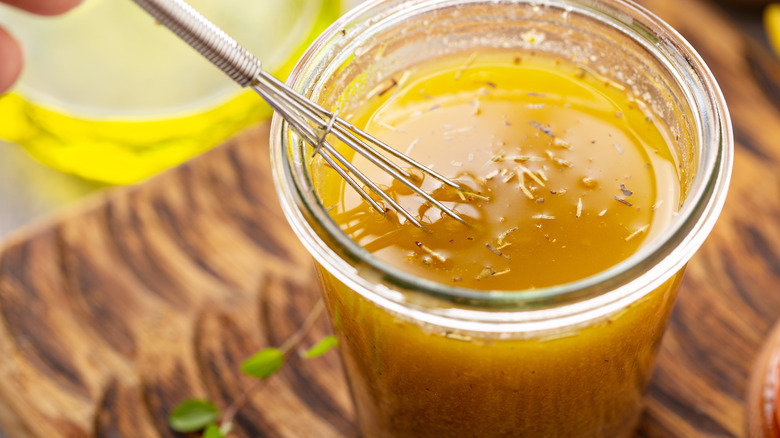What You Should Know Before Substituting Dijon Mustard With Yellow
Most well-stocked home refrigerators have door shelves packed with basic condiments one of which is almost certainly mustard. Like with most condiments that come in several varieties, which type of mustard you're likely to find is largely up to the fridge owner's preference.
Whether you're dressing that hot dog Chicago-style, whipping up a homemade salad dressing, stacking up a deli-style pastrami sandwich, or need an accompaniment on your latest cheeseboard creation, there's a mustard for that. But which mustard? Some versions of the bottled gold are pretty interchangeable; no one will second guess a ramekin of honey mustard instead of whole grain on a charcuterie board. That giant pretzel will taste just as good dipped in hot mustard and washed down with a beer as it would with German mustard.
However, there are some culinary applications that require a certain mustard for a certain reason, and a swap may require tweaking the recipe. Most fridge doors have a bottle of the classic Dijon and a bottle of the trusty yellow mustard rubbing elbows, but if you want to swap one for the other, here's what you need to know.
Two factors come into play
If a recipe calls for Dijon and all you have in the fridge is a bottle of yellow mustard, there are a couple of things to keep in mind. First up is flavor. Both Dijon and yellow mustard are distinct in their own right. That bright yellow bottle everyone loves holds just as bright of mustard inside, thanks to yellow mustard seeds and turmeric. Vinegar is added for that quintessential mustard kick, and water creates a saucy dressing fit for a squeeze at the ballpark. While everyone's favorite posh mustard Dijon is made from brown or black mustard seeds and a bit of white wine, giving it a little bit more depth and bite than the yellow stuff. If you're using either on its own just to dip or top something, you'll notice the difference in taste. If you think your dish would pair nicely with either flavor, go ahead and swap.
The second factor requires a bit more consideration as it can affect the outcome of your dish. If your recipe uses mustard as more than just a smear or drizzle on top of the main components of the dish, it may not be a fair trade. Take salad dressing for example; most recipes call for Dijon to emulsify the oil and vinegar. Yellow just won't cut it and create that same consistency. The proteins and carbohydrates in the hull of the mustard seed are responsible for keeping the dressing combined. Yellow mustard just doesn't have as much as Dijon, and without them, your dressing might not emulsify properly. For other recipes which rely on Dijon in this way, your best bet is to skip the yellow mustard and head to the grocery store instead.

